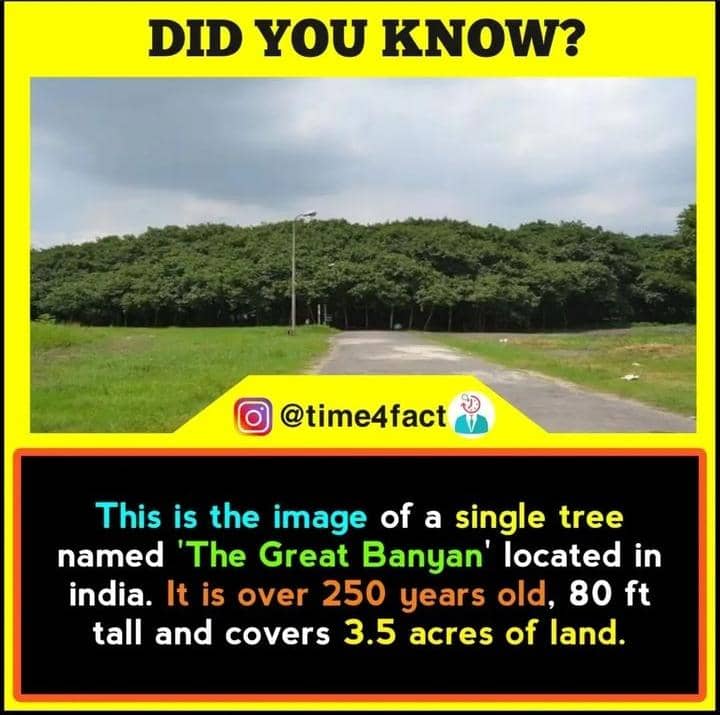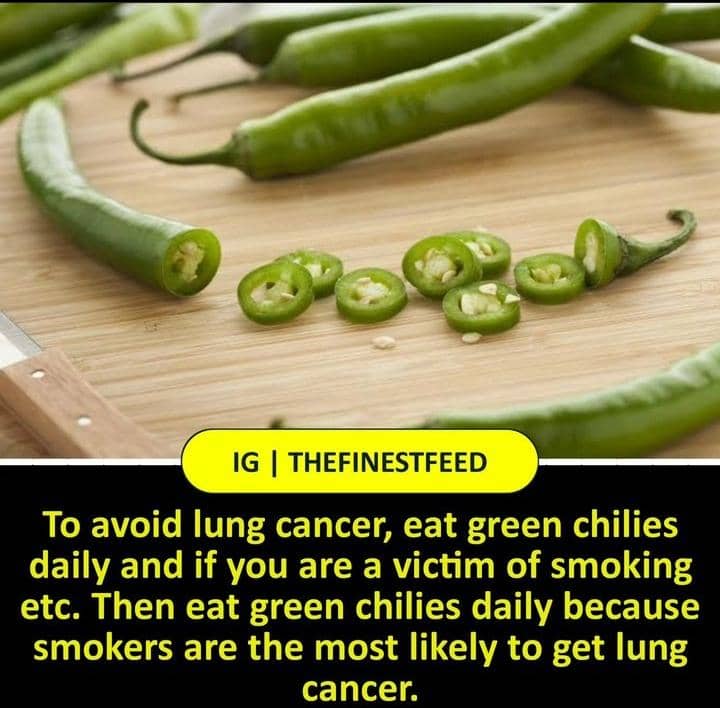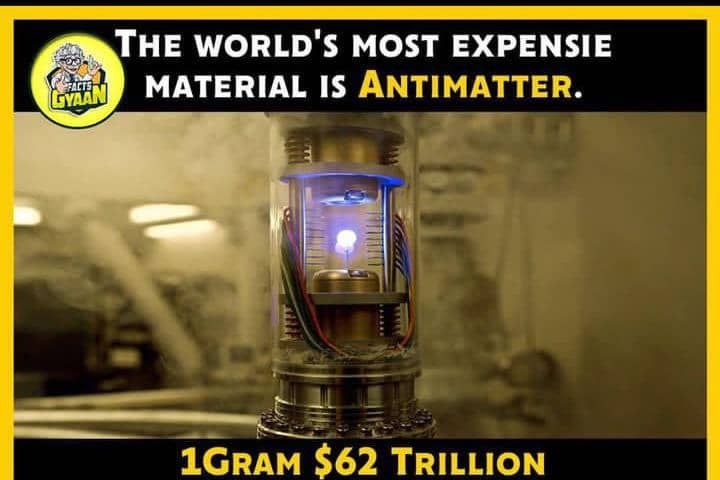Facts – The Great Banyan

The Great Banyan is a banyan tree (Ficus benghalensis) located in Acharya Jagadish Chandra Bose Indian Botanic Garden, Shibpur, Howrah, near Kolkata, India. The great banyan tree draws more visitors to the garden than its collection of exotic plants from five continents. Its main trunk became infected by fungi after it was struck by two cyclones, so in 1925 the main trunk of the tree was amputated to keep the remainder healthy. A 330-metre-long (1,080 ft) road was built around its circumference, but the tree continues to spread beyond it. Full expanse of Great Banyan It was recorded to be the largest tree specimen in the world in the Guinness Book of World Records in 1989. The Great Banyan tree is believed to be at least 250 years old, and has been referenced in many travel books, going back to at least the nineteenth century. Early travel writers found it to be noteworthy due to its large size and its unusually high number of prop-trunks. It has survived three great cyclones in 1864, 1867, and 2020 when some of its main branches were broken. With its large number of aerial roots, which grow from the branches and run vertically to the ground, The Great Banyan is said to appear more like a dense forest than as an individual tree. The tree survives without its main trunk, which decayed and had to be removed in 1925. A monument has been erected to the dead trunk near the tree’s center, but the marker is hardly accessible to visitors, who seldom venture within the tree’s thick inner tangle of roots and branches. Visitors generally prefer to access only the perimeter of the tree. The area occupied by the tree is about 18,918 square metres (about 1.89 hectares or 4.67 acres). The present crown of the tree has a circumference of 486 m. and the highest branch rises to 24.5 m; it has at present 3772 aerial roots reaching down to the ground as a prop root. Its height is almost equivalent to the Gateway of India. The tree lost several prop roots when Cyclone Amphan passed through West Bengal on 20 May, 2020.
Facts – The Secretary Bird

The Secretary Bird is a large bird of prey that is native to Africa. It is known for its distinctive appearance, with long legs and a crest of feathers on its head that resembles the quill pen behind the ear of a 19th-century office worker, hence the name “Secretary Bird”. The bird is also known for its unique hunting style, which involves stomping on its prey with its powerful legs until it is dead. The Secretary Bird is the national emblem of Sudan and appears on the country’s coat of arms. These raptors of sub-Saharan Africa’s savannas, grasslands, and shrub lands stand at nearly four feet tall—and standing is often how you’ll find them, because they primarily move around on foot. They fly only when necessary, such as to reach their nest in the trees and for courtship displays. The secretary bird is distinguished by its long legs and a dramatic black crest of feathers on the back of its head. ts body is covered in whitish-gray feathers, with two long, black-tipped tail feathers. Its bare face is usually yellow, orange or red. The top half of its long legs has black feathers, so it looks a bit like it’s wearing bicycle shorts. The lower half is covered with scales and has barely visible feathers. While it’s not known for certain where the name “secretary bird” comes from, one explanation is that they’re named after 19th lawyer’s clerks, or secretaries. Secretaries typically wore gray coats and knee-length black pants, and they would tuck quill pens behind their ears, similar to the bird’s coloring and head feather Another theory is that “secretary bird” is an English-language corruption of saqr et-tair—roughly meaning “hunter bird” in Arabic— a phrase one traveler claims to have heard Arabic-speaking people in Sudan call it. That explanation, however, has been called into doubt by some experts.
Facts – Green Chilli, Antidote for Lungs Cancer

Green chillies contain phytonutrients that relax the respiratory passage and reduce the chances of lung cancer along with prevention of problems associated with lungs such as Asthma, Cough and cold . However, a study found that capsaicin, the pungent compound in chili peppers, can successfully stop lung cancer metastasis . It is important to note that these are not definitive treatments for lung cancer A new study finds that capsaicin, the pungent compound in chili peppers, can successfully stop lung cancer metastasis. According to the American Cancer SocietyTrusted Source, lung cancer is “by far the leading cause of cancer death among both men and women” in the United States. The Society also estimate that 228,150 people will develop lung cancer and 142,670 people will die from the condition in 2019. Most deaths occur as a result of the cancer metastasizing, or spreading, to distant parts of the body. New research suggests that there may be a nutritional compound that can hinder this process of metastasis. Capsaicin, which is the chemical compound that gives chili peppers their pungent flavor, stopped lung cancer metastasis in rodents and cultured human cell lines. Piyali Dasgupta, Ph.D., from the Marshall University Joan C. Edwards School of Medicine in Huntington, WV, is the senior investigator of the new study. Jamie Friedman, a doctoral researcher in Dasgupta’s lab, is the first author of the paper. Green Chilli An Indian Meal is incomplete without Green Chilies as it is the main ingredient in any Indian recipe. You only need to slice, chop, slit or dice and mix it with the other ingredients or even garnish your food with this hot chili. Famous for its bitterness and heats it produces, after having a stalk of chilly is quite a known fact. There are mainly majorly three kinds of chilies available which are Black Pearl pepper, Bishop’s crown pepper, and black Hungarian pepper. Green Chillies has many health benefits and is also rich in a number of vitamins and minerals. Capsaicin is a chemical present in chilies, which helps the body in many ways which are listed below. Interestingly, India is the largest consumer, producer, and exporter of the green chilies in the world. Let us find out benefits of eating green chilies daily more about this hot and steamy food condiment.
Facts – World Most expensive Material “AntiMatter”

At present, antimatter costs $62.5 trillion per gram. Projected improvements could bring this cost down to $5 billion per gram and the production level up ten times from 1.5*10^-9 to 1.5*10^-8 grams (from 1.5 to 15 nanograms). antimatter was difficult to be created at the very early times of the Universe, the reason is still unknown… Obviously we live in a “matter” world with a low \% of antimatter, meaning that for some reason at some point matter was preferentially produced compared to antimatter…This goes around as matter-antimatter asymmetry. What is antimatter? Most people know that the basic nuclear particles that make up matter are protons, electrons, and neutrons. In 1930, Paul Dirac developed a description of the electron, which also predicted that an antiparticle of the electron should exist. This antielectron (also called a positron) was predicted to have the same mass as the electron but an opposite electric charge. Later, it was discovered that the other basic atomic particles had antimatter counterparts, the antiproton and the antineutron. When a particle and its antimatter counterpart meet, they are both annihilated, which means that the two particles disappear and their mass is converted to energy, following the principle embodied in Einstein’s famous equation E = mc2. As you may well know, “c” in this equation is the speed of light, which is a large number. Because this number is squared, this means that a small amount of mass can be converted to an enormous amount of energy. To give you an idea of how much energy is evolved during a matter/antimatter annihilation, this reaction is considered to be 100,000,000,000 times more powerful than a typical chemical explosion such as trinitrotoluene (TNT) and 10,000 times more powerful than a nuclear explosion. How can you create antimatter? To actually create antimatter, scientists focused on the simplest form of matter, hydrogen. A hydrogen atom consists of just one electron and one proton. This means that the simplest form of antimatter, an antihydrogen, is made up of an antiproton and a positron. The positron is attracted to an antiproton in the same way an electron is attracted to a proton. The first antihydrogen was made in 1995 at the CERN (European Organization for Nuclear Research) super collider by colliding antiprotons with xenon atoms. This collision produces a positron, which is electrically attracted to another antiproton, subsequently forming antihydrogen. Unfortunately, it only takes a few millionths of a second for antimatter particles to come into contact with their matter counterparts, annihilating themselves and giving off energy. Because of this, scientists have worked on ways to make antimatter stable enough to be contained. The key was to slow the antihydrogens to keep them from colliding, and this was achieved by containing the antimatter in a bottle at just half a degree above absolute zero, the theoretically coldest achievable temperature. In 2011, scientists were able to hold produced antihydrogen for over 15 minutes using this method. Why are the costs so high? The reason for antimatter’s tremendous expense is easy to understand when you realize the technology involved in creating it. To make antihydrogen, the required antiprotons must be literally made one atom at a time using a particle accelerator. The CERN super collider is the most complex piece of machinery every constructed by humans. It took about a decade to construct, at a cost of about $4.75 billion. It is roughly 10 miles across and contains 9300 magnets, all of which must be super cooled to − 456.25° F using liquid helium. For the collision to occur, the particles are accelerated to 99.99% of the speed of light, which requires an incredible 120 MW of electric power, enough to power a large city. The collider has a total operating budget of about $1 billion per year, with electricity costs alone running at $23.5 million per year. When you also consider the fact that it has been estimated to take 100 billion years to produce 1 g of antihydrogen, you begin to see why the costs are so high.
Facts – The Sony Play Station as a Console

The first PlayStation was originally conceived as a result of a 1991 partnership between Sony and Nintendo. Nintendo wanted to release a CD-based add-on console for the Super Nintendo Entertainment System (SNES) at the time, and enlisted Sony to develop the machine. However, the partnership failed, and Sony began developing the PlayStation after the failed venture with Nintendo to create a CD-ROM peripheral for the Super Nintendo Entertainment System in the early 1990s. The console was primarily designed by Ken Kutaragi and Sony Computer Entertainment in Japan, while additional development was outsourced in the United Kingdom. Sony released the first PlayStation console in December 1994. The PlayStation (abbreviated as PS, commonly known as the PS1/PS one or its codename PSX) is a home video game console developed and marketed by Sony Computer Entertainment. It was released in Japan on 3 December 1994, in North America on 9 September 1995, in Europe on 29 September 1995, and in Australia on 15 November 1995. As a fifth-generation console, the PlayStation primarily competed with the Nintendo 64 and the Sega Saturn. Sony began developing the PlayStation after a failed venture with Nintendo to create a CD-ROM peripheral for the Super Nintendo Entertainment System in the early 1990s. The console was primarily designed by Ken Kutaragi and Sony Computer Entertainment in Japan, while additional development was outsourced in the United Kingdom An emphasis on 3D polygon graphics was placed at the forefront of the console’s design. PlayStation game production was designed to be streamlined and inclusive, enticing the support of many third-party developers. The console proved popular for its extensive game library, popular franchises, low retail price, and aggressive youth marketing which advertised it as the preferable console for adolescents and adults. Premier PlayStation franchises included Gran Turismo, Crash Bandicoot, Spyro, Tomb Raider, Metal Gear, Tekken, and Final Fantasy, all of which spawned numerous sequels. PlayStation games continued to sell until Sony ceased production of the PlayStation and its games on 23 March 2006—over eleven years after it had been released, and less than a year before the debut of the PlayStation 3. A total of 3,061 PlayStation games were released, with cumulative sales of 967 million units. The PlayStation signalled Sony’s rise to power in the video game industry. It received acclaim and sold strongly; in less than a decade, it became the first computer entertainment platform to ship over 100 million units. Its use of compact discs heralded the game industry’s transition from cartridges. The PlayStation’s success led to a line of successors, beginning with the PlayStation 2 in 2000. In the same year, Sony released a smaller and cheaper model, the PS one.
